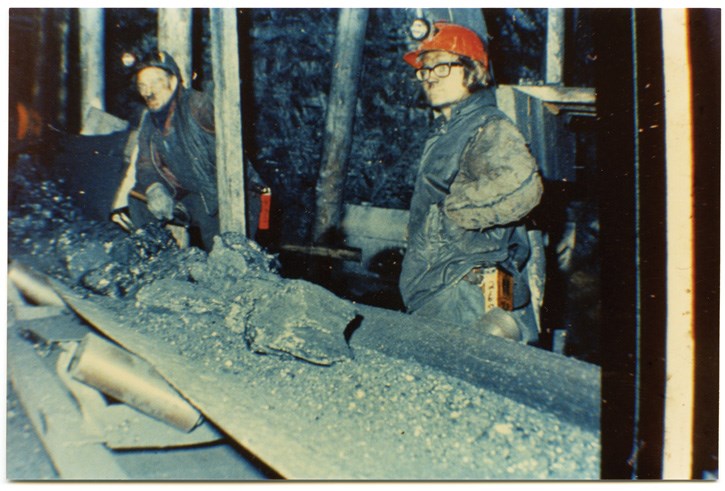CANMORE – If you’ve ever wanted to explore a coalmine underneath the mountains of Canmore, a new project at the museum is hoping to take you there virtually.
The Canmore Museum and Geoscience Centre is currently working on a project to develop a virtual reality experience of the Canmore mines.
Museum director Jason Gariepy said while Canmore has a rich mining past, there is no tangible way for people to really connect with that history of what it was like to work underground.
“Now we have a chance to do something that immerses you in a [coal mining] experience and I am very excited about that,” he said. “The challenge for us is that we want to do it authentically … I want to honour the miners with as much of an authentic experience as I can.”
Canmore author Jerry Auld has been working with 3D computer models of local landmarks, like his animated history of the Engine Bridge. He is helping to develop the virtual reality experience using his expertise in modelling.
Some of the practical decisions Auld has helped with included choosing an era in coal mining to feature in the experience. With 100 years of mining history in Canmore, there is plenty to choose from.
“When you put on the headset, earphones and hand controllers it allows you to be in the model as if it is part of your visual experience,” he said. “It is really immersive and in fact a little bit spooky. Your senses are really easily fooled, so it becomes super immersive.”
Picking an era like the 1920s or 1930s, he said, would include a lot of the things people already romantically associate with coal mines: axes, mine carts and lanterns.
There is also a lot to be said for the sounds and smells that accompany a virtual reality program.
Gariepy said that is why the project has included those who used to work in the mines, like Ed Latvala, who can describe those elements.
“The important part of this project and why I think it is important to have the miners here is we have to get the sound right,” Gariepy said.
Latvala said as a miner you rely on all your senses underground – but given the darkness you work within, sound and smell become very important.
“The smell of a mine is sort of like earth, you know, but there is also the smell of sacking, the smell of timber and the sulphur in the water,” he said. “And of course you are always listening and looking more than anything.
“Your senseS come alive when you are in the mine.”
Auld said several aspects of a virtual reality experience need to be considered before the museum’s project is designed.
He said a virtual reality experience is about discovery and is best designed as a circuitous journey than a linear one. That creates ease of use for the person experiencing the virtual reality program and decreases staff resources required.
“What you want to do is have a continuous experience, so wherever you are in the route you put it on and get to experience it until you take it off,” Auld said.
There is also the fact that a coal mine in Canmore is different than any other in the world, due to the unique fact that coal seams in the mountains are not linear formations, but can be vertical or sloped. That means a company chosen to design the virtual reality experience needs to understand that in order to be historically accurate.
The project is possible as a result of a successful grant application to the Tourism Growth and Innovation Fund.
MLA Cam Westhead supported the application by the museum for $25,000 in matching funds to create the virtual reality experience.
“The Tourism Growth and Innovation Fund is meant to help develop new attractions, or draw visitors to existing attractions that are typically outside of the major tourism destination like the Rocky Mountains, Calgary and Edmonton,” Westhead said. “This year, it is going to be 40 years since the mines closed and looking back at the history … we want to preserve those stories.”




